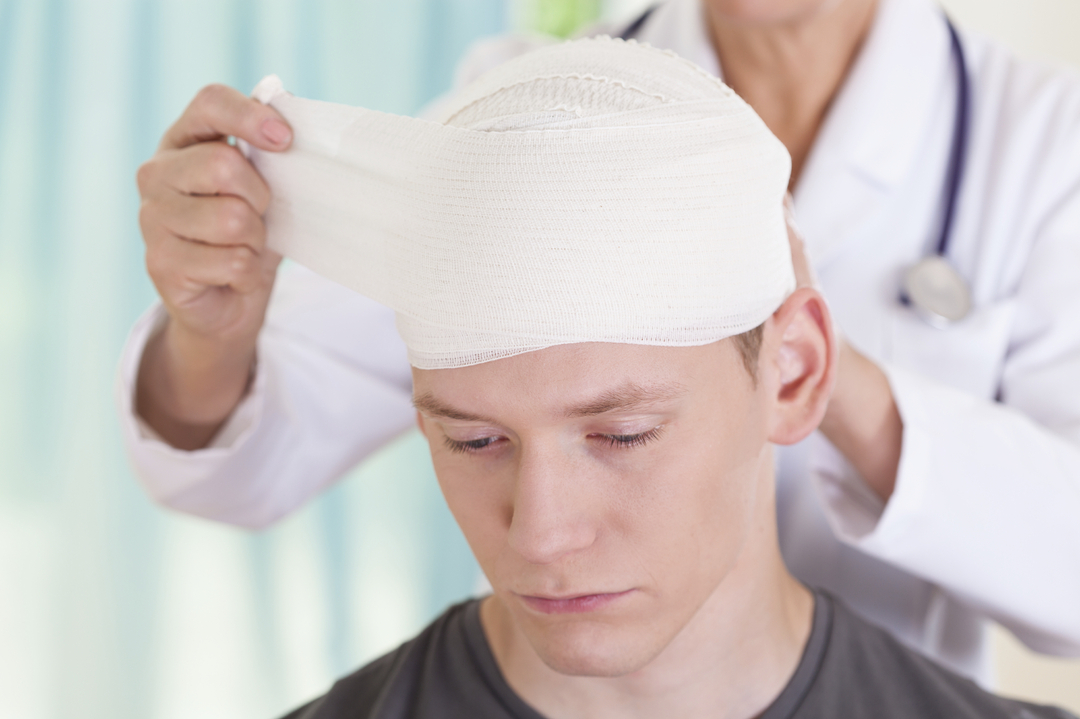Hypothermia: what it is and causes in adults, symptoms, treatment
In this article, we will look at what hypothermia is in adults, how it manifests itself, the causes of its occurrence and the methods of therapy.
Content
- What is hypothermia?
- Therapeutic hypothermia
- Perioperative hypothermia
- Causes of hypothermia
- Symptoms of hypothermia
- Diagnostics
- Therapeutic approach
- Prevention and recommendations
What is hypothermia?
Man belongs to "homeothermic" organisms that are able to maintain their body temperature more or less constant, regardless of fluctuations in ambient temperature. The behavior of heterothermal organisms such as amphibians (also called cold-blooded organisms), different because they are able to change their body temperature when the surrounding climatic changes temperature.
The mechanism underlying this balance is called thermoregulation and, in turn, is based on various processes by which the human body gives or receives heat from the outside in order to remain permanent.
It is therefore intuitively clear how failure to adhere to this careful regulation, both in one sense and in another, can cause suffering to the human body.
When body temperature drops below the normal "set point" of the body, which is usually 37 ° C, it is called "Hypothermia", that is, hypothermia; this state may be more or less intense, more or less transient, and its main causes may be different. The main therapy, obviously, is to restore normal body temperature as quickly as possible.
However, there are rules that must be followed even when the optimal body temperature is restored, since, as you will further see that too fast recovery can lead to serious changes in the body (sometimes even irreversible).
Therapeutic hypothermia
Special attention should be paid to the form of hypothermia, which is usually milder than accidental, which can be carried out and received in the hospital in favor of certain clinical conditions of the patient.
Maintaining body temperature between 32 ° C and 33 ° C (we are talking about a form of hypothermia called "mild") can reduce the average metabolic intake of the body; this method is used primarily in pathologies of the central nervous system, in order to limit neurological damage when there is not enough energy to ensure the continuation of life.
Another condition in which therapeutic hypothermia sometimes appears to be applicable is the cardiac recovery state after its arrest.
However, in the case of cardiac surgeries performed with extracorporeal circulation, it is possible to lower the body temperature to reduce the body's metabolism (which in this case will be fed with artificially oxygenated blood from the artificial circulation).
Read also:Bitter taste in the mouth: what it can be, causes and treatment of a bitter taste in the mouth
Perioperative hypothermia
Hypothermia can also develop during hospitalization, especially before, during, and after surgery. This hypothermia is called perioperative.
The hospital staff will try to keep the patient warm during hospitalization, in particular, they will check the body temperature and, when if necessary, can resort to special thermal films, which are supplied with hot air to counteract cooling the patient.
However, the patient should inform the staff about the possible cold sensation.
Causes of hypothermia

The optimum body temperature is usually defined as 37 ° C, although in reality the temperature is always changeable and fluctuates in the range from 36.4 ° C to 37.5 ° C.
Correct maintenance of these values should be carried out through constant regulation between the production and distribution of body heat (a set of pathways commonly called "Thermoregulation").
Hypothermia, defined as a body temperature just below 35 ° C, and can be caused by:
-
Increased heat loss, for example, in the following conditions and diseases:
- skin conditions, such as burns of varying degrees, that alter the skin's ability to retain heat and cause greater heat loss;
- vascular problems. Skin temperature is mainly maintained by vasodilation and vasoconstriction of blood vessels (that is, dilation and narrowing of blood vessels), modulating the amount of blood that can reach the surface layer of the mucous membrane of the body and generate more or less heat into the surrounding Wednesday. An increase in vasodilation causes an increase in body dispersion and hence a decrease in temperature. These vascular problems can, in turn, be the result of changes in the autonomic nervous system;
- disorders of the central nervous system, in which the center of temperature regulation is located, that is, the hypothalamus.
- Systemic diseases:
- infections;
- sepsis;
- neoplasms;
- vascular insufficiency;
- and many others. diseases ...
- Reduced heat generation. This cause is usually associated with more common conditions such as old age, malnutrition, diabetes, hypoglycemia and so on.
Other causes of hypothermia can be:
- inability to properly respond to changes in temperature in the environment, for example, in the case of intoxication, excess alcohol, drugs or drugs in the body;
- wearing inappropriate clothing that is not suitable for the surrounding climate;
- chronic diseases, especially diabetes mellitus, the consequences of which can then lead to vascular, neurological changes that do not allow for a good regulation of body temperature.
- Transient states such as immobility and fractures can alter the thermoregulation of the entire body or parts of it.
Recall, which in general is the most frequent cause of accidental hypothermia alcohol intoxication is common among young people.
Symptoms of hypothermia

Typical manifestations with which the human body reflects underlying hypothermia:
- vasoconstriction (narrowing of the lumen of blood vessels) of the skin (if the mechanisms are not damaged), which then causes a feeling of cold skin (the phrase, your hands are cold, just about this); it is a mechanism created by the body to retain heat at the level of vital organs;
- labored breathing;
- renal changes, up to a change in the concentration of electrolytes in the blood;
- heart and circulatory problems;
- chills (goose bumps accompanied by tremors (tremors) help generate heat through movement).
Read also:Back pain in the area of the shoulder blades: the reasons, which doctor should be consulted
Accidental hypothermia can then be classified by measured body temperature:
- slight hypothermia, 35 to 32 ° C.
- moderate hypothermia, 32 to 28 ° C
- severe hypothermia when the temperature drops below 28 ° C. This threshold is of fundamental importance, because once it is passed, the risk of ventricular fibrillation or other cardiac arrhythmiasrefractory to treatment is highly likely.
People with moderate to severe hypothermia are usually unaware of their condition because symptoms often come on gradually. In addition, the annulment of thought associated with hypothermia interferes with self-awareness. Mental confusion can also lead to risky behavior.
Diagnostics
Diagnosis of hypothermia is essentially clinical, based on observation of a patient with a body temperature measurement that detects a temperature below 35 ° C. The main symptoms observed at diagnosis are cold and bluish skin. Cyanosis (cyanosis of the skin) is caused by shortness of breath.
Therapeutic approach
The main task of the physician intervening in hypothermia should be to raise the patient's body temperature, and this can be achieved in essentially two ways:
- Passive heating: cover the patient with a blanket, warm the environment, dry him if the patient gets wet;
- Active heating: injection of hot fluids into a vein, artificial circulation, immersion of the patient in hot water.
If treatment is not available, start warming up the person:
- Take the person to a warm room.
- Take off any wet clothing.
- Heat the center of the body first, then the chest, neck, head and groin using an electric blanket, if available. Alternatively, use skin-to-skin contact under dry layers of blankets, clothing, tissues, or sheets.
- Hot drinks can be helpful, but alcohol should be ALWAYS avoided for an adult.
- Do not try to force the unconscious person to drink.
- As soon as the body temperature rises, keep the person dry and wrap them in a warm blanket, including their head and neck.
- Call medical help as soon as possible.
Read also:Symptoms and treatment of abscesses
Heating too quickly, especially in the case of severe hypothermia, can lead to a number of dangerous complications, including:
- hypotension;
- hypoglycemia,
- changes in the bladder;
- paralytic intestinal obstruction (that is, transient intestinal paralysis);
- bleeding and changes in coagulation mechanisms;
- rhabdomyolysis (a syndrome that is an extreme degree of myopathy and is characterized by the destruction of muscle cells);
- severe electrolyte changes, the final manifestation of which (in fact, the most critical) can lead to fibrillation of the ventricles of the heart due to potassium imbalance.
Severe hypothermia, characterized by a body temperature below 28 ° C, can also be associated with cardiac arrest, in which case (but only after it has been precisely established that there is no heartbeat), doctors need to start performing cardiopulmonary resuscitation.
Prevention and recommendations
- DO NOT drink alcohol or smoke before exposing yourself to the cold. Drink a lot, eat a lot, and get plenty of rest.
- Wear clothing suitable for low temperatures to protect your body. In particular:
- mittens (not gloves);
- different layers of wind and water resistant clothing;
- two pairs of socks (avoid cotton);
- a scarf and headgear that also protects the ears (to prevent significant heat transfer from the head).
Avoid:
- Extremely low temperatures, especially in high winds;
- Wearing wet clothes;
- Poor circulation, more likely in old age, when wearing tight clothing or shoes, being in one position.



